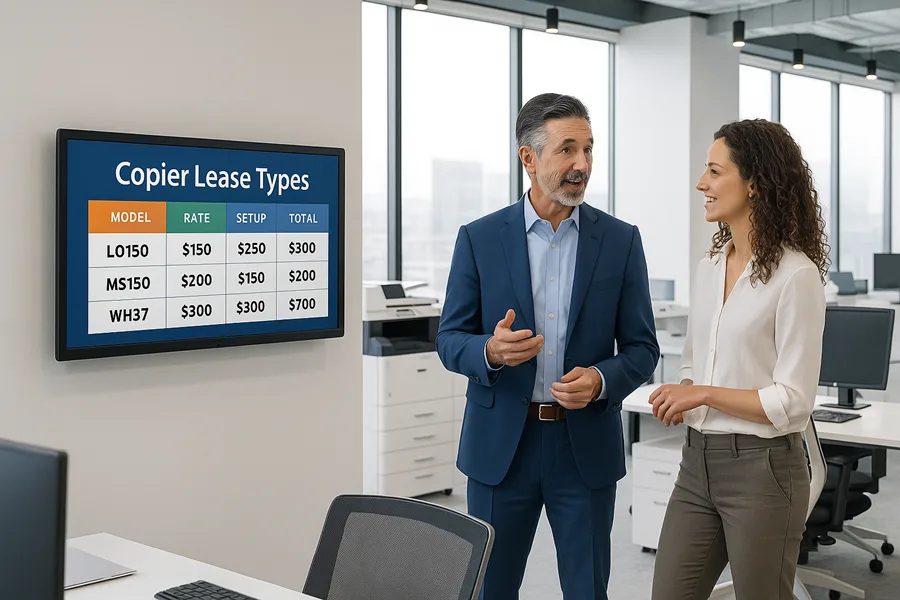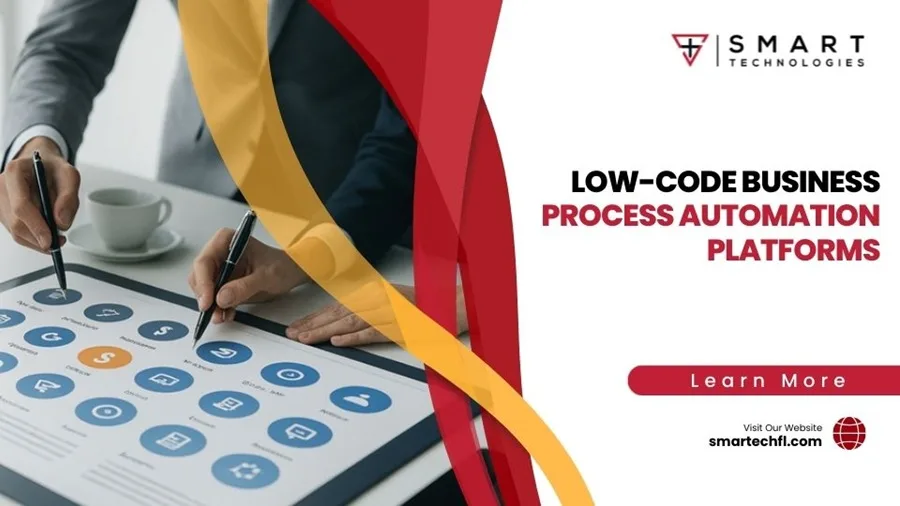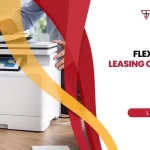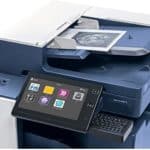Flexible Copier Leasing Options for Businesses
AI Overview:
This guide explains how copier and office printer leasing helps businesses access modern MFPs without large upfront costs. By converting equipment into a predictable monthly expense, companies preserve cash flow, reduce risk, and stay current with evolving print technology. It compares key lease types, outlines what services and supplies are typically included, and shows how to avoid hidden costs.
The blog also highlights the value of bundling leasing with Managed Print Services (MPS), managed IT, and cybersecurity to boost uptime, improve document security, and automate workflows. It closes with 2025 trends such as energy-efficient devices, sustainability, hybrid-office needs, and AI-driven optimization to help businesses choose a cost-effective, flexible, and future-ready printing solution.
A Practical Guide to Cost‑Effective Office Printer Lease Solutions
Leasing copiers lets businesses use commercial copiers and multifunction printers (MFPs) without a big up‑front purchase. With structured lease agreements you preserve capital, gain predictable monthly costs, and stay current with printing technology. This guide walks through how leasing works, compares common structures like FMV and buyout leases, highlights measurable benefits for cash flow and uptime, and explains how integrating managed IT and MPS reduces risk. Many organizations face tight budgets, fast technology turnover, and stricter document security requirements—flexible leases address those challenges by combining equipment finance with service and supplies. Read on for step‑by‑step leasing mechanics, side‑by‑side lease comparisons, practical selection criteria, and 2025 trends such as sustainability and hybrid‑office needs. Throughout, you’ll find actionable checklists and clear tables to simplify decisions, plus notes on how a local provider can bundle leasing with managed services for single‑vendor accountability.
What Is Copier Leasing and How Does It Work for Businesses?
Copier leasing is an equipment‑finance arrangement where a business pays a regular fee to use commercial copiers and office printers instead of buying them outright. Leasing gives you access to modern MFP features with predictable costs. The process typically involves choosing a machine, agreeing on term length and included services, signing a contract with defined SLAs, and scheduling installation. After setup, the lessor or service partner manages maintenance, supplies, and warranty work under the agreed terms—shifting repair and consumable risk away from your team and improving operational reliability. Understanding these mechanics helps you plan cash flow, time lifecycle upgrades, and keep working capital focused on core activities. Below are the common lease stages in practical order.
The standard leasing process follows a few repeatable stages:
- Select the equipment model and features that match your monthly print volume and MFP needs.
- Negotiate term length, SLA response times, and what supplies or services are included.
- Complete a credit review, sign the lease, then schedule delivery and installation.
- Receive ongoing support with remote monitoring and end‑of‑term options such as return, renewal, or purchase.
These steps set clear expectations and create a transparent lifecycle for each device, making lease comparisons easier and helping you calculate total cost over the contract term.
What Are the Typical Lease Terms and Agreements?
Typical copier lease agreements spell out term lengths, monthly payments, included services, and end‑of‑term options. Common terms run 24, 36, 48, or 60 months depending on technology needs. Contracts usually include SLAs for response times, whether toner and supplies are covered, routine maintenance and parts replacement, plus early‑termination or upgrade clauses. Watch for usage clauses such as monthly page allowances and excess copy fees so you avoid surprise charges, and confirm whether remote monitoring or fleet management is included. Clear language about options at term end—return, buy at fair market value, or renew—removes ambiguity and supports predictable lifecycle planning.
How Do Short-Term and Long-Term Copier Leases Differ?
Short‑term rentals focus on flexibility and immediate availability for events, pilots, or seasonal spikes. They usually carry higher monthly costs but no long‑term obligation. Long‑term leases lower monthly payments and suit core office deployments that need steady uptime and predictable budgeting. Short‑term rentals typically offer fast delivery and minimal setup, while multi‑year leases spread costs, often include upgrade options, and support managed print services for multi‑device fleets. The right choice hinges on usage frequency, tolerance for rapid tech change, and whether you prioritize agility or long‑term cost control. Align lease length with your business cadence to match growth plans and refresh cycles.
What Are the Key Benefits of Flexible Copier Leasing for Business Owners?

Flexible copier leasing delivers clear benefits: it preserves cash by reducing upfront spending, gives access to current commercial copiers and MFP features, bundles maintenance to minimize downtime, and simplifies budgeting with predictable monthly charges. Leasing converts a capital purchase into an operating expense—often preserving borrowing capacity and letting you invest in revenue‑generating activities rather than depreciating assets. Leases that include managed print services and supplies cut administrative work—automatic toner replenishment, remote fault detection, and SLA‑backed repairs keep teams productive. Together, these advantages translate into measurable savings and better uptime compared with in‑house maintenance.
Key quantifiable benefits include:
- Predictable monthly payments that stabilize cash flow and simplify forecasting.
- Less downtime thanks to included maintenance and SLA guarantees.
- Faster access to energy‑efficient, feature‑rich MFPs that support modern workflows.
- Lower procurement overhead from consolidated supply and service management.
Once you weigh financial and operational gains, compare lease packages with simple metrics like monthly cost per 1,000 pages and expected uptime to prioritize providers and contract terms.
How Does Leasing Improve Financial Flexibility and Budgeting?
Leasing improves financial flexibility by converting a one‑time capital purchase into predictable operating payments, which preserves working capital and can improve short‑term liquidity ratios. This OPEX profile often aligns better with monthly revenue cycles and makes it easier to scale your fleet without large capital commitments. Inclusive leases that cover supplies and maintenance reduce variable costs and make print expenses forecastable. Short‑term rental options also support temporary needs without long commitments. Modeling purchase versus lease scenarios helps quantify trade‑offs and identify which approach best supports your financial goals.
What Maintenance and Support Services Are Included in Copier Leases?
Most leases include preventive maintenance, on‑site repairs, parts replacement, remote diagnostics, and supply replenishment (toner, imaging units), with service levels defined in an SLA. Premium bundles may add managed print services that provide usage analytics, automated consumables ordering, and consolidated billing to lower administrative overhead. Remote monitoring lets providers detect faults and reorder supplies proactively, reducing downtime and keeping fleets running. Be sure to confirm SLA details—response time, covered labor, and exclusions—to ensure the lease meets your uptime needs.
Which Copier Lease Types Are Available and How Do They Compare?

Common lease structures include Fair Market Value (FMV) leases, $1 buyout leases, operating leases, capital leases, and short‑term rentals. They vary by monthly cost, ownership outcome, accounting treatment, and end‑of‑term flexibility. FMV leases usually offer lower payments and let you return, renew, or buy the device at fair market value—good for organizations that refresh technology regularly. A $1 buyout lease ends with ownership for a nominal fee and may suit companies that prefer the asset on the balance sheet. Operating and capital leases have different accounting implications, while short‑term rentals serve temporary needs. Choose the structure that matches your cash flow, upgrade cadence, and accounting preferences.
What Is a Fair Market Value Lease and When Is It Ideal?
An FMV lease gives you use of the copier for a set term and leaves end‑of‑term choices open—return, renew, or buy at current fair market value. FMV is ideal if you expect rapid technology change or prefer regular refresh cycles. Because the lessor bears the residual risk, FMV leases often have lower monthly payments and preserve replacement flexibility. This structure is attractive when you want to align equipment refreshes with tech roadmaps or sustainability goals without the burden of ownership and disposal. Choose FMV when flexibility and access to evolving features matter more than owning the asset.
What Are the Pros and Cons of Each Lease Type?
Each lease type has trade‑offs: FMV offers low monthly cost and refresh flexibility but leaves you exposed to market buyout pricing at term end; $1 buyout delivers ownership but higher monthly cost; operating leases simplify OPEX treatment but may limit ownership benefits; capital leases give balance‑sheet control with more complex accounting. Compare these pros and cons against your usage patterns, upgrade cadence, and tax objectives. A checklist that lines up monthly cost, expected lifecycle, and end‑of‑term goals will simplify negotiations and help you pick the best option.
How to Choose the Right Copier Lease Option for Your Business Needs?
Start by assessing your print volume, required MFP features (color, scanning, secure print), budget limits, and projected growth—these inputs guide term selection and SLA requirements. Balance lower monthly payments against desired ownership outcomes and upgrade flexibility. Prioritize providers with strong local support, transparent SLAs, and the ability to bundle managed IT or MPS so you have one accountable partner. Using clear decision criteria reduces vendor comparison complexity and ensures the lease supports both operational and financial goals.
Prioritized selection checklist:
- Measure monthly page volumes and peak usage to size devices correctly.
- List must‑have features (secure scanning, duplexing, color) and likely future needs.
- Calculate total cost of ownership, including service, supplies, and potential upgrade fees.
- Vet providers for local support, SLA clarity, and bundled managed services.
Following these steps creates a repeatable evaluation process to help procurement teams shortlist options and negotiate terms that match your organization’s needs.
What Factors Should Businesses Consider When Selecting a Copier Lease?
Consider expected print and scan volumes, security requirements for document workflows, preferred upgrade cadence, monthly budget limits, and whether you want an all‑inclusive supply agreement. Check for remote monitoring, fleet analytics, and automated supply reordering—these features reduce downtime and administrative work. Growth projections determine whether you need a lease that easily adds or replaces devices; seasonal or project needs may point to short‑term rentals. Prioritizing these factors results in a usage‑informed lease that balances cost and service responsiveness.
Why Is Choosing a Reputable Copier Leasing Provider Important?
A reputable provider delivers consistent SLA performance, fast onsite response, clear billing, and the option to integrate managed IT or cybersecurity to protect document workflows and networked devices. Vendor reliability directly affects uptime and long‑term satisfaction—poor service leads to hidden costs from downtime and unexpected fees. Ask for sample SLAs, clarify supply inclusions, and request proof of remote monitoring capabilities when vetting partners. An integrated provider reduces vendor management overhead and better aligns copier leasing with your broader technology and security strategy.
How Does Smart Technologies Enhance Copier Leasing with Integrated Business Solutions?
Smart Technologies pairs copier leasing with managed IT, cybersecurity, and business process automation to create a single, managed‑services solution that minimizes downtime and simplifies vendor management. Based in Daytona Beach, we provide bundled quotes for IT services, cybersecurity, and office equipment so device selection lines up with network security and workflow automation needs. Our approach centers on predictable, all‑inclusive service packages and local support that shortens resolution times and centralizes accountability. Organizations that need secure document workflows and tight IT governance benefit from a single partner that understands both hardware and network implications.
How Do Managed IT and Business Process Automation Integrate with Copier Leasing?
Managed IT and business process automation connect with leasing through secure scanning‑to‑cloud workflows, user authentication for release printing, remote device monitoring, and automated document routing that removes manual steps and boosts compliance. Secure scanning ties into cybersecurity controls managed by IT so scanned documents follow retention and access rules. Automation turns repetitive paper tasks into digital workflows, cutting print volume and shifting value from simple printing to full document lifecycle management. These integrations lower labor costs, reduce manual errors, and strengthen data protection.
Beyond document handling, modern offices also gain from improved communication tools. Integrated solutions can extend to business communication systems so your tech stack works together—improving overall efficiency.
What Are the Advantages of Leasing Copiers with No Upfront Costs and All-Inclusive Supplies?
No‑upfront leases with all‑inclusive supplies simplify procurement by removing large initial capital requirements and bundling service and consumables into one predictable monthly payment. These agreements usually include automatic toner replenishment and routine maintenance, which cuts downtime and reduces internal admin work. If you want to trial a higher‑end model, zero‑upfront options lower the barrier to entry and let you evaluate performance without committing capital. This model supports fast deployment and fewer surprises so your team can focus on outcomes rather than equipment logistics.
What Are the Latest Industry Trends and Future Outlook for Copier Leasing in 2025?
In 2025, copier leasing is shaped by growing demand for managed print services, energy‑efficient MFPs, and integrated cybersecurity as organizations modernize document workflows and adapt to hybrid work. Providers are emphasizing sustainability—low‑power models and refurbished equipment—to meet ESG goals and reduce operating costs. Managed services continue to grow as companies prefer a single partner for devices, supplies, and IT security. Generative AI and analytics are starting to enable smarter fleet optimization and predictive maintenance. These trends shift leasing conversations from simple cost comparisons to how well solutions support sustainability, security, and hybrid workflows.
- Sustainability‑first leasing with energy‑rated devices and refurbished options.
- Broader managed services that combine MPS, IT, and cybersecurity for unified support.
- Flexible terms and short‑term rentals to support hybrid and project‑based office use.
These trends mean leasing decisions increasingly weigh operational impact and sustainability alongside price.
How Are Energy-Efficient and Eco-Friendly Copiers Shaping Leasing Demand?
Energy‑efficient and eco‑friendly copiers reduce operating costs and help companies meet sustainability commitments, increasing demand for leases that highlight low‑power models and responsible end‑of‑life practices. Providers offering refurbished copiers or OEM energy‑efficient lines make it easier to reach ESG targets without big capital outlays. Ask providers about energy ratings, toner efficiency, and refurbishment guarantees to evaluate lifecycle impact—lower electricity use and less waste can offset small monthly premiums and improve total cost of ownership over time.
What Impact Does the Return-to-Office Movement Have on Copier Leasing Needs?
The return‑to‑office and hybrid work trend drives demand for shared, centrally placed MFPs and creates a need for short‑term rentals or flexible upgrade paths to match changing occupancy. Organizations using hoteling or hybrid schedules often choose fewer, more capable shared printers with secure authentication and scanning‑to‑digital workflows for distributed teams. Leasing strategies that make it easy to add, relocate, or temporarily deploy units help maintain efficiency without overcommitting to fixed assets.
For organizations in the Daytona Beach area exploring integrated leasing and managed services, Smart Technologies offers local support and tailored quotes that combine copier leasing with managed IT, cybersecurity, and business process automation. We map equipment selection to security and workflow requirements so businesses can implement cost‑effective, future‑ready printing strategies. To start a bundled assessment, request a quote and we’ll align lease structure, service inclusions, and lifecycle planning with your operational goals.
Frequently Asked Questions
No schema found.












